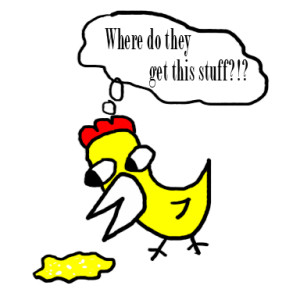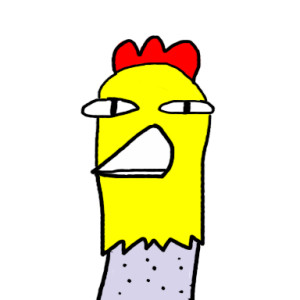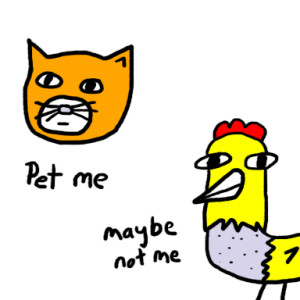Moltin’ Ain’t Easy
Fall marches on, and the molting continues. It always seems to take longer than I expect, but I’m still pleased they started before it got too cold. It’s been chilly at night, but not yet below freezing. They’ve begun to clump on the roost, which means they’re keeping each other warm when it gets a little brisk. We’re down to an average of two eggs a day, since growing new feathers takes a lot of energy, even more than laying eggs, so it’s one or the other. I’ve started giving them black oil sunflower seeds each morning in addition to their daily bowl of yogurt. Protein is something they really need during a molt, and the black oil seeds are a good source of that. I should probably also be giving them scrambled eggs, but then we get back into that whole “oh man, they’re eating their own eggs,” icky feeling. But it’s good for them, so I’ll do my best to get over it.
Most of them are having what’s called a “soft” molt, which means that they look a little threadbare, but otherwise fine. Maybe some feathers are sticking out at funny angles, like they just rolled out of bed and didn’t have time to do their hair, but otherwise you might not know anything was up if you didn’t know what to look for. One of the Mandrell Sisters, however, has entered the world of the “rough molt.” This is when they have big bare patches from a ton of feathers falling out. If you search the internet for rough molt pictures, you will find chickens that look way worse than she does, but she still looks pretty bad. It also seems like she doesn’t feel too great. It would make sense that the more feathers she loses, the more energy she needs to grow them back, so she’s going to seem tired. Her neck is pretty bare, and she tends to walk very slowly and seems kind of spaced out. If she wasn’t molting, I’d worry about her, but this all makes sense during a molt, so I just feel for her, and hope things move along. Of course, rough molts take longer to recover from, so she may be this way for a while.
One night recently I was checking on them before bed, and she was there on the roost, looking bummed out as usual. The pinfeathers in her neck looked like weird fish bones (new feathers look like little straws, and then eventually the feather pops out), and it just seemed like she needed some consoling. I was about to pet her and tell her everything was o.k., like I would a cat or dog, and then I remembered that molting can actually be a little painful, especially if you touch the molting chicken. I caught myself, reminded myself that she was not a cat or dog, and then just told her she would be alright. The tenderness of the molt also explains why I’ve seen her reluctant to get in and get at the sunflower seeds in the morning. The other chickens swarm the pile, and she just stands outside watching. I suppose if she charged into the fray, it would probably hurt, and apparently bad enough that skipping the treat is a fair trade. I’ve started spreading the seeds all over the run so everyone can have space as they feast. Hopefully this will assist her nutritional needs.
I’m getting used to dealing with molting now. It’s a part of Fall, just like the leaves changing. It’s not as pretty, and people don’t come around by the carload to look at the molting chickens, but maybe they should. Feather peeping could be the big new Autumn activity. But on second thought, traffic in our town is bad enough, I don’t need to make it any worse by attracting tourists.
(CREDITS: Theme music: Chicken In The Barnyard by Fireproof Babies, Music bed: Werdenfelser Trompeten Landler by Strassmeir Dachaur Bauernkapelle)
Tags: backyard chickens, chickens, Erik P. Kraft, hipster farming, molting, podcast



